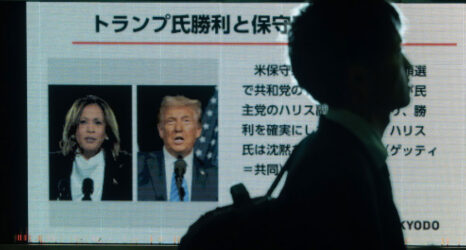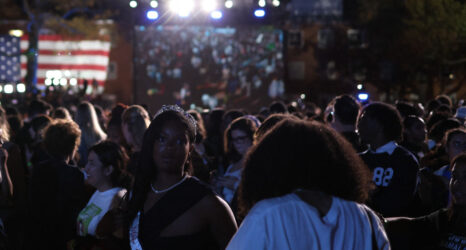This post was originally published by the Women’s Suffrage Centennial Commission (WSCC), and is republished here with permission. The WSCC is an agency of the federal government, and the publication of this post does not imply any type of partnership or relationship with the WSCC, and it does not imply WSCC’s endorsement of this outlet and its communications.
When lawyer and suffragist Gail Laughlin (1868-1952) discovered that her evening gown had no pockets in it, she refused to wear it until the pockets were sewn on. Objecting to the restrictive nature of women’s clothing was just one of the ways that suffragists sought to upend the status quo in the early twentieth century.
The women’s suffrage movement allowed women to re-examine, question and begin to systematically rebel against the many restrictions they had lived under for centuries—including oppressive gender and sexual norms. There are, of course, more serious examples, besides Laughlin’s demand for pockets, of how suffragists defied the gendered conventions of their day.
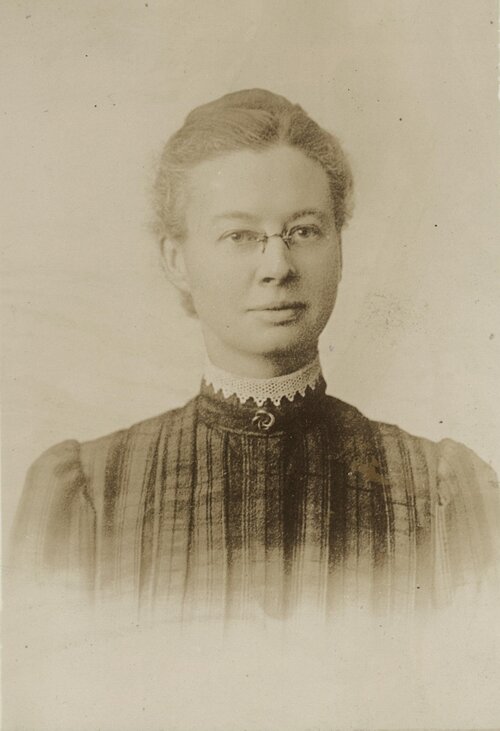
When Belle Squire joined the fight for suffrage, she not only wanted the vote, she wanted to smash what we now call “the patriarchy.”
In 1910, she led the “No Vote, No Tax League,” inspiring at least 5,000 women in Cook County, Ill., to refuse to pay their taxes until women were granted the right to vote. Squire also made a bold statement against the oppression of women by publicly declaring her refusal to marry.
She explained that she would rather have a vote than a husband because “with a vote a woman’s wages, dignity and position are raised; with a husband they may be lowered.” Squire insisted that what women really want from men is to be recognized as “an individual, an equal, maybe, a human being even, as they themselves are.”
She declared that as an unmarried woman she deserved the same respect that married women enjoyed and insisted on being referred to with the honorific title of “Mrs. Squire” rather than “Miss Squire,” because she believed that single women should be afforded the same respect as married women.
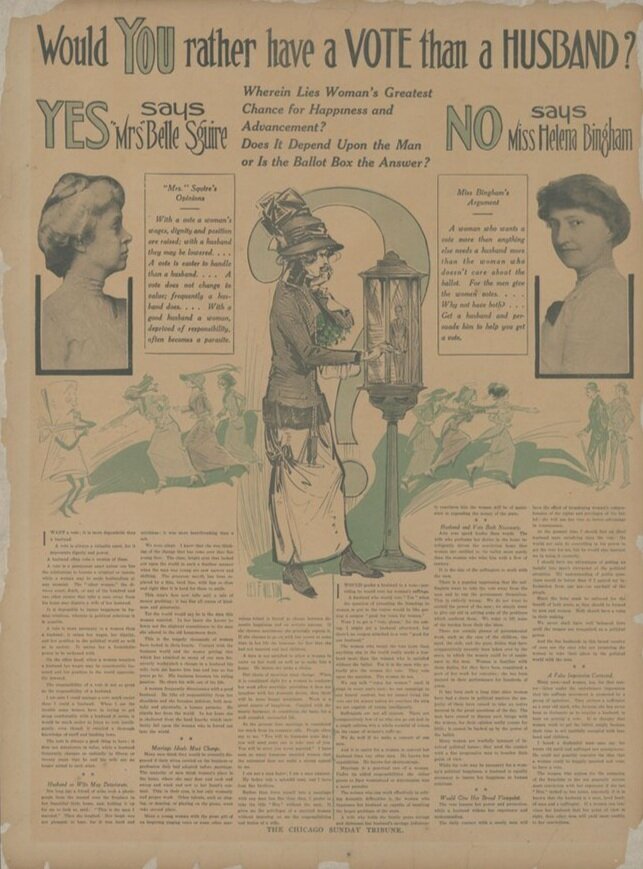
Laughlin and Squire’s demands may seem humorous to us today, but in their own unique ways they were challenging gendered norms. “Queering the suffrage movement” can allow us to disrupt the traditional narrative of suffrage history by considering it from different perspectives, including the perspective of LGBTQ+ history. Scholars have already begun “queering” the history of the suffrage movement by deconstructing the dominant narrative that has focused on the stories of elite, white, upper-class suffragists.
Queering the suffrage movement can also help us move beyond a framework that privileges only the stories of heterosexual, gender-conforming suffragists to also consider the various ways suffragists transgressed normative boundaries of gender and sexuality.
In the early twentieth century, modern terms such as LGBTQ+ did not exist, but LGBTQ+ people have always existed. I use the term “queer” here as an umbrella term to describe suffragists who challenged gender and sexual norms in their everyday lives and, if they were alive today, might identify as LGBTQ+.
One such suffragist, New York philanthropist Annie Tinker (1884-1924), refused to conform to gendered notions of how a woman should act and dress. In the present day, Tinker might have described herself as non-binary, gender fluid, or butch. But in the 1910s, those words were not in general usage. Instead, people labeled women like Tinker as “mannish.”
Tinker proudly formed a “cavalry of suffragists” to ride on horseback in New York City suffrage parades. In the 1913 parade, Tinker dressed in riding boots, breeches, a man’s coat, and silk top hat that elicited much comment from parade-goers and the press. The New York Times described her “mannish garb” as “distinctive.”
A gossip columnist for the society tabloid “Town Topics” was less kind, snidely remarking on her “oddities” and expressing his intense dislike for “the masculine fashion in which she handled her hat.” But Tinker was determined to be who she wanted to be and fight for others who desired the same right.
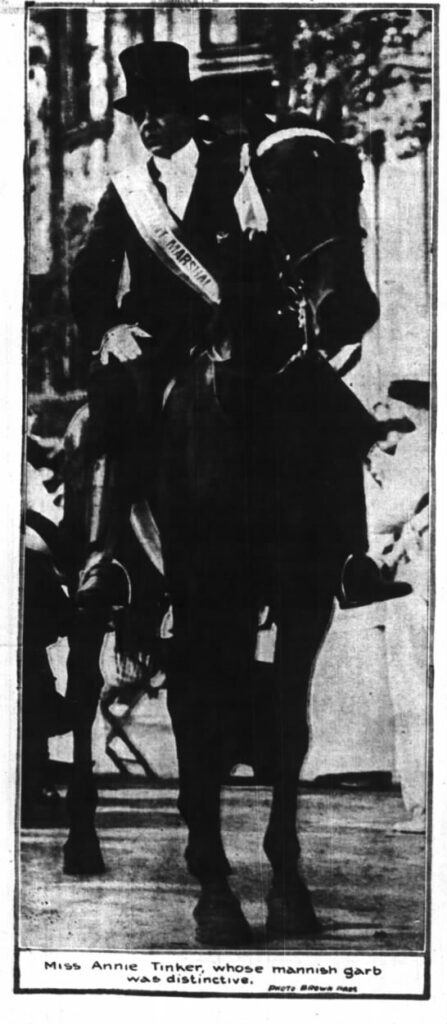
A decade later and on the opposite coast of the country in San Francisco, Dr. Margaret Chung (1889-1959) advocated for the voting rights of Chinese and American women through her activism in the Woman’s Auxiliary of the Chinese American League of Justice, the Chinese Protective Association, and the Chinese Women’s Reform Club. Chung with her slicked-back hair, black tailored suit, hat, and cane, attracted much attention in early twentieth-century California.
Chung, or “Mike” as she preferred to be called by friends, not only broke down barriers as a pioneering Chinese-American woman physician (the first in the country), but also brazenly knocked down gender norms through her clothing and affinity for behaviors that were considered “unladylike” at the time, such as drinking, gambling, and swearing.
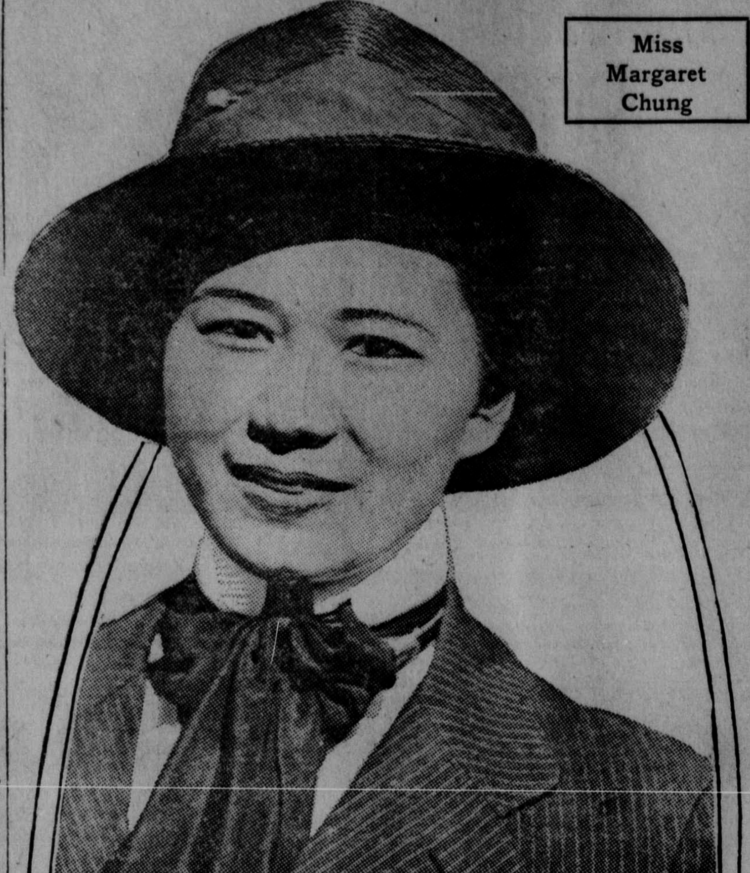
Anti-suffrage critics used terms like “mannish” and “abnormal” to denigrate suffragists like Tinker and Chung. Gender-defying suffragists faced pressure to conform to heteronormative standards of beauty and behavior not only from their critics, but also from inside the suffrage movement.
Leaders of major suffrage organizations recommended that the women in their ranks wear fashionable feminine dresses and hats. They were exhorted to present themselves “as attractive, as charming and as lovable” as possible in order to win men’s support for suffrage.
By adhering to the expectations of proper feminine appearance and behavior of the early twentieth century, suffrage leaders hoped to create at least a public front of “respectability.” But many suffragists didn’t conform to the gendered rules of the day and frequently defied the mainstream movement’s gendered expectations.
In addition to transgressing gendered boundaries, many suffragists also challenged the view that heterosexual marriage between one man and one woman was the only acceptable form of relationship.
Alice Dunbar-Nelson (1875-1935) was an African-American writer and activist who worked as an organizer for the Congressional Union (which would become the National Woman’s Party after 1916).
The CU focused on lobbying for a federal women’s suffrage amendment and sent field organizers out to rally support, forming local branches in cities throughout the nation. Dunbar-Nelson toured Pennsylvania and New Jersey, appealing to black and white audiences to support women’s right to vote. As a member of the National Association of Colored Women, she advocated for women’s rights while also fighting against racial discrimination and violence against the Black community.
Publicly, she cultivated a respectable image as “Mrs. Paul Laurence Dunbar, widow of the famous poet.” Even after she was remarried to Robert Nelson in 1916, she retained Dunbar’s name for the status it afforded her and was thereafter known as Alice Dunbar-Nelson.
Although she maintained this public face of respectable heterosexuality, privately, she engaged in romantic and sexual relationships with men and women throughout her single and married life. She wrote about the details of some of these relationships in her diary, revealing a thriving lesbian and bisexual subculture among Black suffragists and clubwomen.
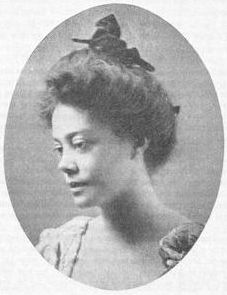
Some suffragists also formed committed, intimate relationships with other women in what was referred to at the time as “Boston marriages.” These co-habiting relationships were friendships, professional partnerships, creative collaborations and often, lesbian romances.
Scholars have documented the Boston marriages of many well-known women whom we might describe as “power couples” in modern parlance. These included: Lucy Anthony and Anna Howard Shaw, Carrie Chapman Catt and Mary Garrett Hay, Lucy Diggs Slowe and Mary Burrill, Frances Willard and Anna Adams Gordon, Jane Addams and Mary Rozet Smith, Sophonisba Breckinridge and Edith Abbott and M. Carey Thomas and Mary Elizabeth Garret.
Boston marriages were also common among lesser-known women in the movement. Leona Huntzinger and Elizabeth Hopkinson were working-class women who met at a lace curtain factory in Philadelphia.
In 1917, they left their jobs hoping to “get out and see the world” by traveling west toward Chicago. They stopped for a week or two in each town to work before moving on to the next one. Along the way, they purchased a Ford and accepted a job traveling through New York State stumping for women’s suffrage. They drove throughout the Northeast on a six-month tour, camping out of the car and delivering stirring suffrage speeches standing in the backseat. These “pals,” as they dubbed themselves, were inseparable.
After the campaign was over, the two women settled down together on a small farm in Pennsylvania where they lived out their lives in a committed loving relationship.
Gail Laughlin and Dr. Mary Austin Sperry were yet another inseparable suffrage couple. They met while working on the California campaign for the vote. The National American Woman Suffrage Association (NAWSA) hired Laughlin to work as an organizer for the state in 1903. Sperry met Laughlin through her mother, Mary Simpson Sperry, who was the president of the California Women’s Suffrage Association and directed Laughlin’s work. Laughlin and the younger Sperry soon became romantic partners, moving to Colorado together and then back again to California.
They enjoyed a fourteen-year Boston marriage until it ended suddenly with Sperry’s tragic death in 1919 during the Spanish influenza pandemic. Sperry’s will requested that all of her property and her remains be passed on to Laughlin.
Despite the significance of Sperry to Laughlin’s life, a biography of Gail Laughlin written in 1979 by Laughlin’s niece relegated Sperry to a passing reference, noting simply that the two women formed a “close friendship” and lived together in the Sperry family home. Other biographical articles written about Laughlin neglect to mention Sperry altogether, essentially erasing her and her significance in Laughlin’s life from history.
But Laughlin did not forget Sperry. She kept her partner’s ashes with her for life and when she died in 1952, she requested that their remains be interred together in the same grave with both of their names etched on a single marker. This simple brass marker continues to commemorate their life together and their commitment to each other in this world and beyond.
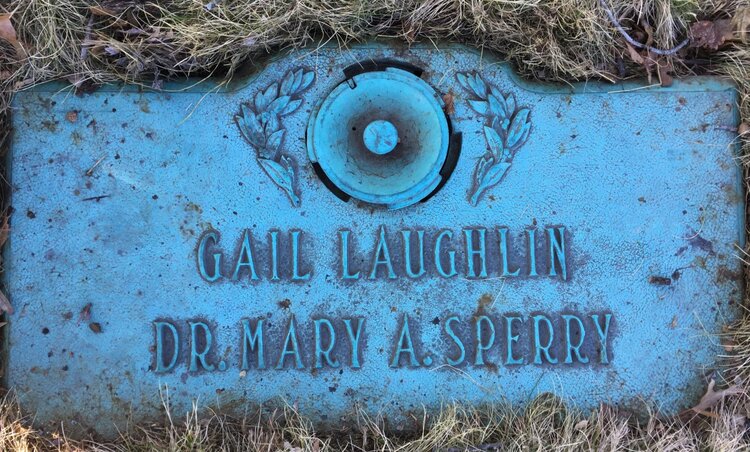
Why “Queer” the Suffrage Movement?
Why should we “queer the suffrage movement” and reconsider the traditional narrative of suffrage history?
First, it is important simply to acknowledge that queer suffragists existed. This may seem obvious. But, there has been a concerted effort by descendants, biographers, historians, and archivists to explain away or conceal gender-defying and non-heterosexual suffragists.
Suffragists who didn’t conform to the gendered norms of their day were sometimes described as simply “eccentric” in an attempt to minimize the significance of their gender expression or identity. Partners of suffragists were often relegated to the status of “close friend” or, worse yet, entirely written out of the biographies all together. This has led to an erasure of queer history.
But these suffragists were important. They made significant contributions and were, in fact, often the very leaders of the suffrage movement. They helped push the movement in more radical directions. They lived and loved deeply, navigating the complexities of their personal and public lives. Their stories deserve to be told.
Queer suffragists thus were fighting for much more than the right to vote. They were fighting for a world where they could be free to be who they were and love who they wanted to love.
Oh, and pockets. They really wanted pockets too.




